| |
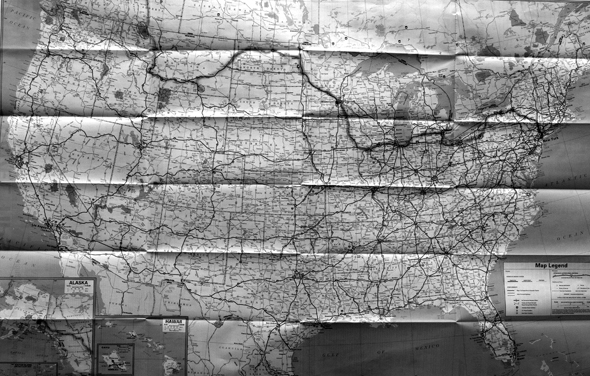 |
| |
| |
|
| |
| |
 |
| |
| August 3, 2008 Kaatskill Kaleidoscope, Mount Tremper, New York |
| |
| The world’s largest kaleidoscope, built in 1996 by psychedelic artist Isaac Abrams and his son Raphael. The 60 foot tall converted grain silo is referred to by Abrams as the “first cathedral of the third millennium”. |
| |
| |
|
| |
| |
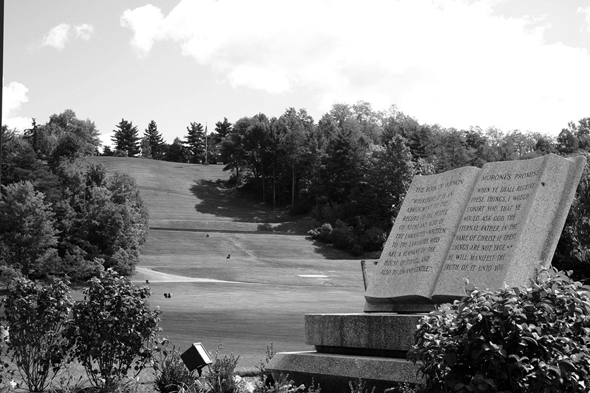 |
| |
| August 4, 2008 Hill Cumorah, Palmyra, New York |
| |
| Located in Western New York, the Hill Cumorah is the site where Joseph Smith claimed to have discovered the golden plates, which contained the writings of the Book of Mormon. The Book of Mormon states that in A.D. 421, Moroni, the last survivor of a great civilization that had inhabited the Americas since around 600 B.C., buried in the hill a set of gold plates on which was recorded the history of his people. Located near Smith’s boyhood home, he visited the hill yearly on the 22nd of September between 1823 and 1827. According to Smith, the Angel Moroni and other holy messengers appeared to him on September 22, 1827, and allowed him to remove the golden plates from within the hill. |
| |
| |
|
| |
| |
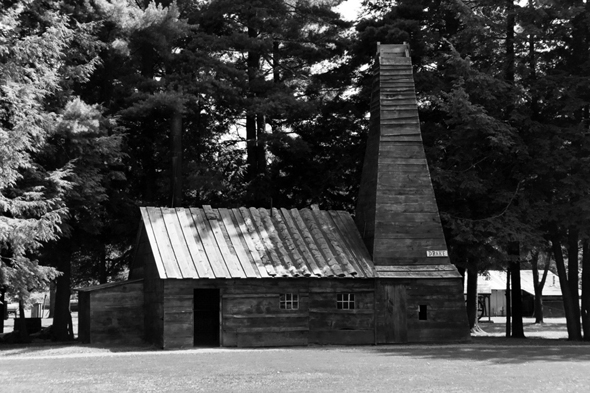 |
| |
| August 5, 2008 Drake’s Well, Oil Creek, PA |
| |
| The first commercial oil well in the United States, Edwin L. Drake struck oil on this site in 1859. |
| |
| |
|
| |
| |
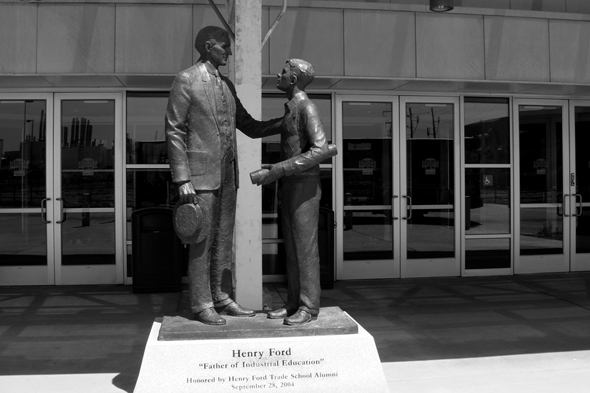 |
| |
| August 6, 2008 Ford River Rouge Complex, Dearborn, Michigan |
| |
| When completed in 1928, the Rouge complex was the largest integrated factory in the world. At its peak in 1930 the factory employed 100,000 workers. Covering an area 1.5 miles long and 1 mile wide, the complex included 93 buildings, 15,767,708 square feet of floor area, 120 miles of conveyor belts, its own railroad with 100 miles of track and 16 locomotives, a bus network running on 15 miles of paved roads, a tire plant, stamping plant, transmission plant, radiator plant, tool and dye plant, engine casting plant, frame and assembly plant and a paper mill. The Rouge Complex operated throughout the great depression, with difficult conditions for workers as a result of Fords obsession with increasing productivity through methodical efficiency studies. The Battle of the Overpass, occurred on May 26, 1937, when a group of union organizers and women, conducting a leaflet campaign entitled “Unionism not Fordism” were beaten outside the gates of the complex by Ford security and hired thugs. |
| |
| |
|
| |
| |
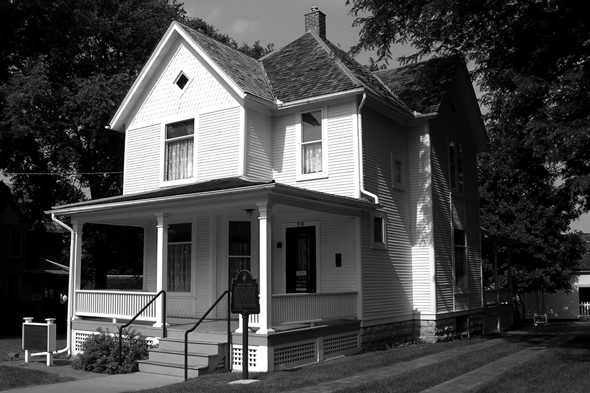 |
| |
| August 9, 2008 Reagan Boyhood Home, Dixon, Illinois |
| |
| Ronald Reagan, the 40th president of the United States, lived in this late 19th century gabled roof home between 1920 and 1924. Reagan recounts this story from his childhood: “On the eve of the Fourth of July when I was eleven, I managed somehow to obtain some prohibited fireworks, including a particularly powerful variety of firecracker known as a torpedo. As I approached the Town Bridge that spanned the Rock River one afternoon, I let a torpedo fly against a brick wall next to the bridge. The ensuing blast was appropriately loud, but as I savored it, a car pulled up and the driver ordered me to get inside. I’d been taught not to get into automobiles with strangers, and refused. When he flashed a police badge, I got in the car. Then I made a second mistake: As we started to drive away, I said, “Twinkle, twinkle little star, who in the hell do you think you are?” |
| |
| |
|
| |
| |
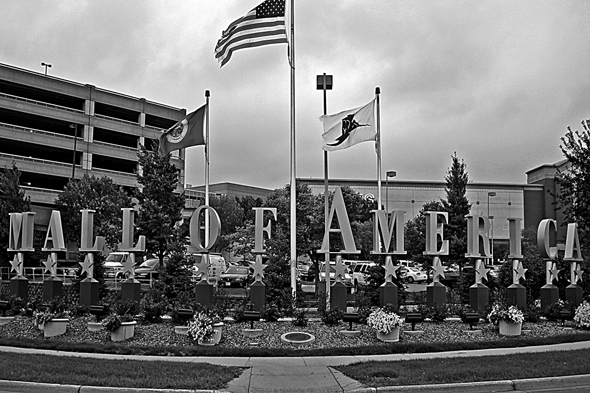 |
| |
| August 10, 2008 Mall of America, Bloomington, Minnesot |
| |
| The Mall of America has a gross area of over 4.2 million square feet and is the most visited shopping mall in the world, with 40 million visitors annually and 12,000 employees. Completed in 1992, The Mall of America is undergoing an expansion to double the mall’s size, adding an additional 5.2 million square foot extension, which will include a dinner theater, ice rink, three hotels and a water park. At the center of the mall is Nickelodeon Universe, the largest indoor theme park in the United States. Parking lots and garages provide 20,000 parking spaces. On January 6, 2008 a man jumped to his death off the east-side parking ramp. |
| |
| |
|
| |
| |
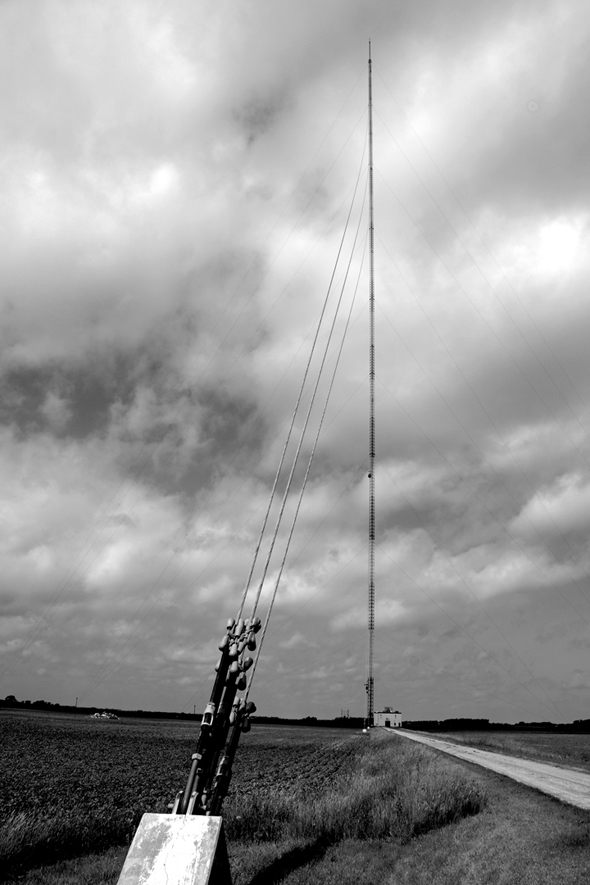 |
| |
| August 12, 2008 KVLY-TV Mast, Blanchard, North Dakota |
| |
| Built in 1963 and owned by Hoak Media of Dallas, Texas, the KVLY-TV mast was until recently the largest artificial structure in the world. 2063 ft (629 m) tall, in 2008 the mast was surpassed in height by the Burj Dubai, in the United Arab Emirates. The tower broadcasts channel 11-an NBC affiliate-over 30,000 square miles. |
| |
|
| |
| |
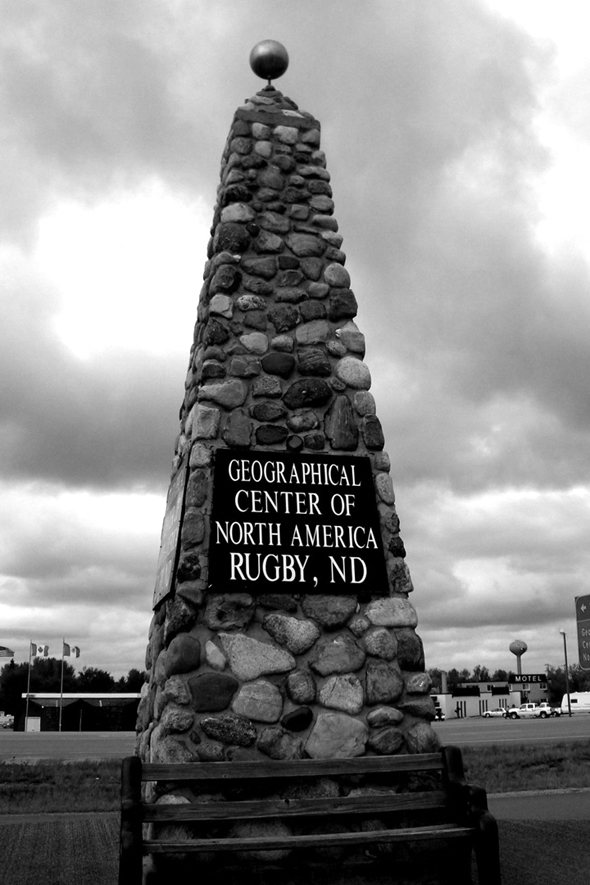 |
| |
| August 12, 2008 Geographical Center of North America, Rugby, North Dakota |
| |
| The Geographical Survey defines the “geographic center of an area” as that point on which the surface of the area would balance if it were a plane of uniform thickness. The Geographical Survey does not recognize the geographical center as an exact location. |
| |
| |
|
| |
| |
 |
| |
| August 13, 2008 Little Bighorn Battlefield National Monument, Crow Agency, Montana |
| |
| In 1874 Gold was discovered in the Black Hills, at the center of a newly appointed Indian Reservation. News of the gold strike spread rapidly, bringing prospectors to the reservation. Breaking the Peace Agreement of 1868, in growing defiance, the Lakota and Cheyenne began to leave the reservation. When the tribes did not respond to requests from the Commissioner of Indian Affairs to return, the Army was called in. On June 25th and 26th, 1876, 12 companies of the Seventh Cavalry, led by Lt. Col. George Armstrong Custer, were defeated by Lakota, Cheyenne, and Arapaho warriors. Mythologized as Custer’s Last Stand, in 1879 the battlefield was designated a national cemetery, administered by the War Department. In 1940, control of the monument was transferred to the National Park Service. It was not until the 1990’s that a memorial was erected in tribute to the Native Americans who lost their lives in the Battle. |
| |
| |
|
| |
| |
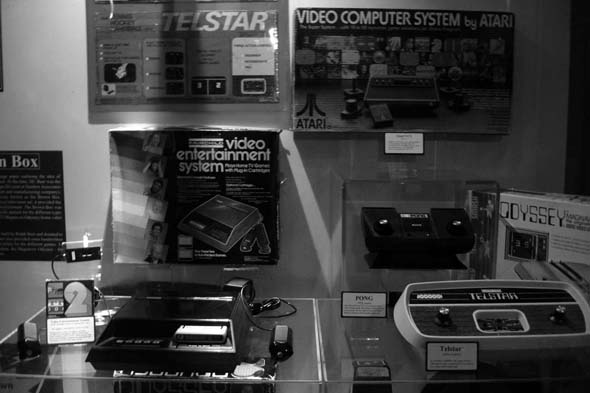 |
| |
| August 14, 2008 The American Computer Museum, Bozeman, Montana |
| |
| Founded in May 1990 by Barbara and George Keremedjiev, the mission of the museum is “to collect, preserve, interpret, and display the artifacts and history of the information age.” |
| |
| |
|
| |
| |
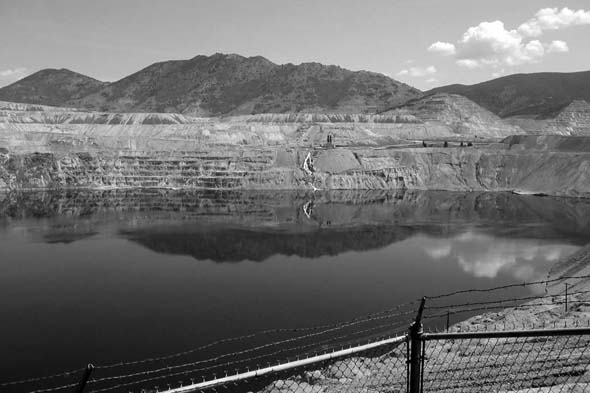 |
| |
| August 14, 2008 Berkeley Pit, Butte, Montana |
| |
| The Berkeley Pit is a former open pit copper mine, operated between 1952 and 1982 by Anaconda Copper and the Atlantic Richfield Company (ARCO). Approximately 1,780 feet (540 m) deep, it is filled to a depth of 900 feet (270 m) with water that is highly acidic and laden with heavy metals and dangerous chemicals, such as arsenic, cadmium, zinc, and sulfuric acid. At the height of operation, the pit extracted 17,000 tons of ore per day. It is now one of the largest Superfund sites and is a tourist attraction with a two-dollar entrance fee, allowing access to the gift shop and observation deck. In 1995 a flock of migrating Snow geese landed in the water of Berkeley Pit and died. 342 carcasses were recovered. |
| |
| |
|
| |
| |
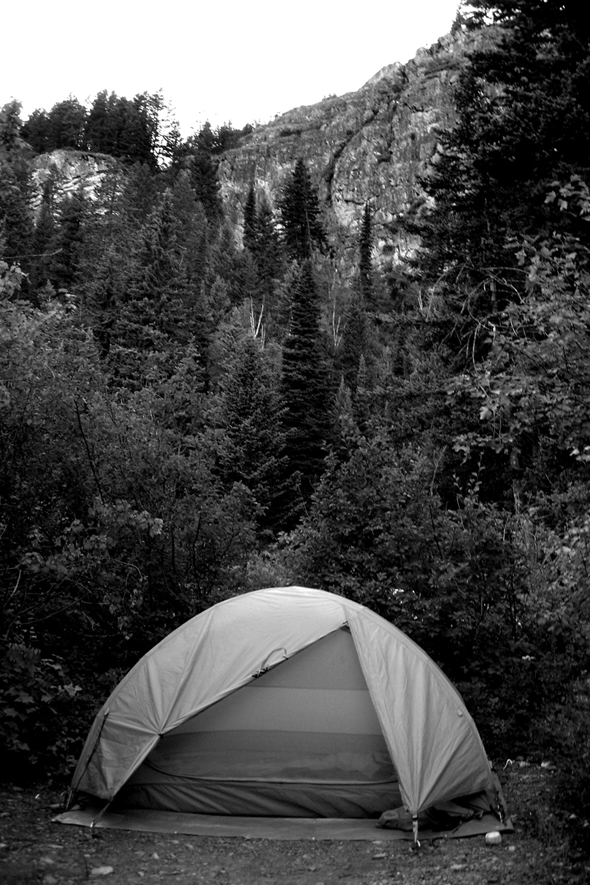 |
| |
| August 15, 2008 Waterton-Glacier International Peace Park, Montana |
| |
| |
|
| |
| |
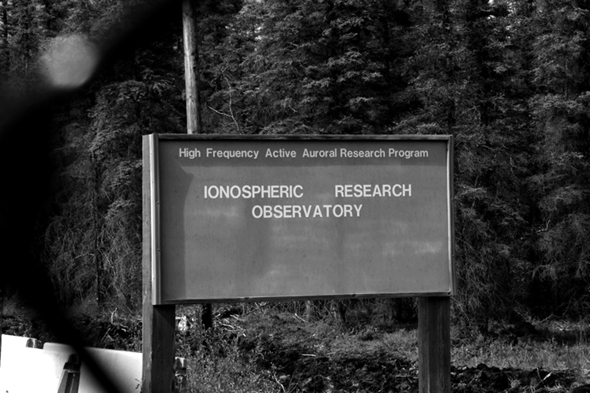 |
| |
| August 18, 2008 High Frequency Active Auroral Research Program (HAARP), Gakona, Alaska |
| |
| In late June I received an email from my close friend Todd. It simply stated “check this out,” and had a link pasted into the body of the message. Clicking on the link I was redirected to a video clip of a newscast relating the recent earthquake in China to a research facility in Alaska known as the High Frequency Active Auroral Research Program (HAARP). The video was a montage of footage and subtitles claiming HAARP to be a U.S. super weapon of the “New World Order,” that was active on the day the earthquake occurred. |
| |
| HAARP is located just North of Gakona Alaska, a small village with a population hovering around 215 people. The Program is managed and funded by the United States Air Force, the Navy, the University of Alaska and the Defense Advanced Research Projects Agency (DARPA). According to the official website HAARP “is a scientific endeavor aimed at studying the properties and behavior of the ionosphere, with particular emphasis on being able to understand and use it to enhance communications and surveillance systems for both civilian and defense purposes.” Consisting of “a high power transmitter and antenna array operating in the High Frequency (HF) range. The transmitter is capable of delivering up to 3.6 million Watts to an antenna system consisting of 180 crossed dipole antennas arranged as a rectangular, planar array. The Ionospheric Research Instrument (IRI) will be used to temporarily excite a limited area of the ionosphere for scientific study.” |
| |
| |
|
| |
| |
|